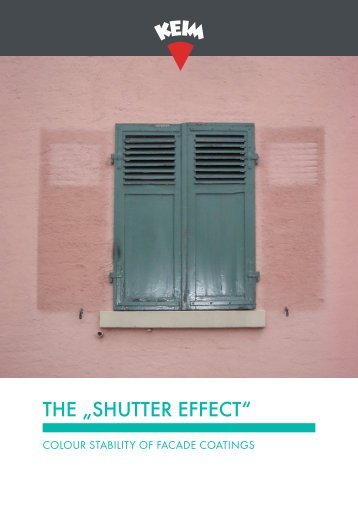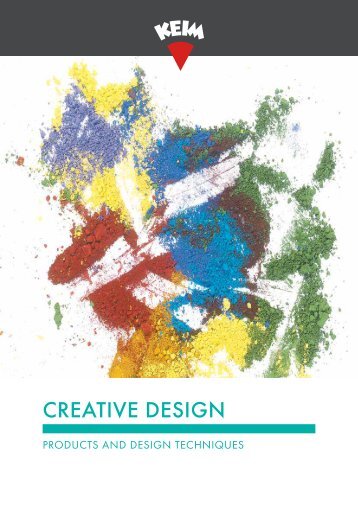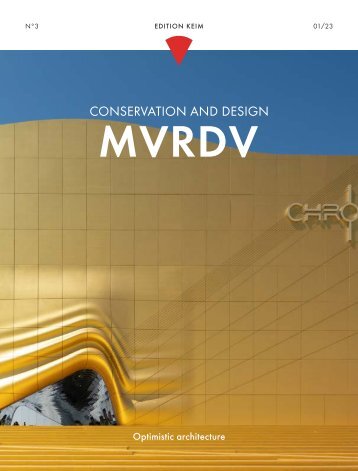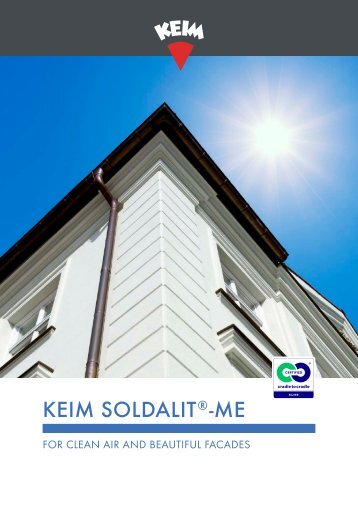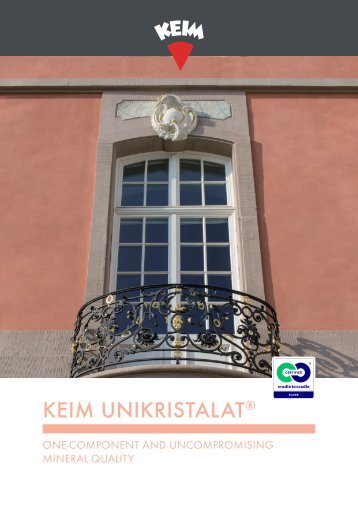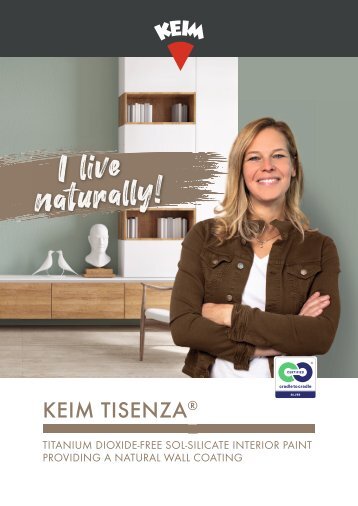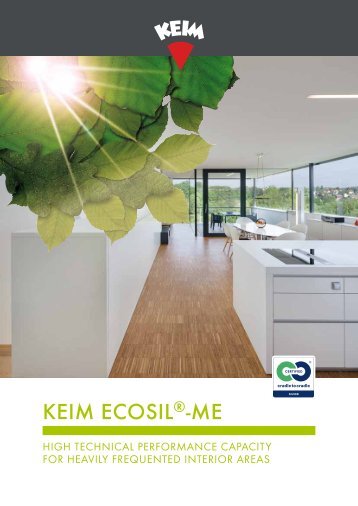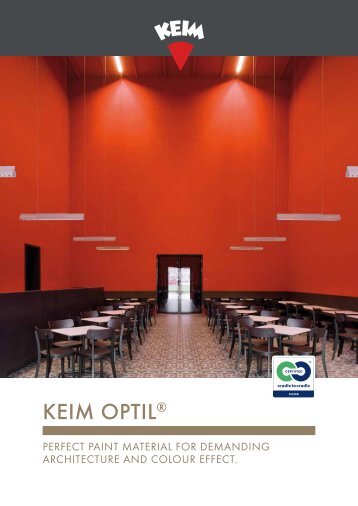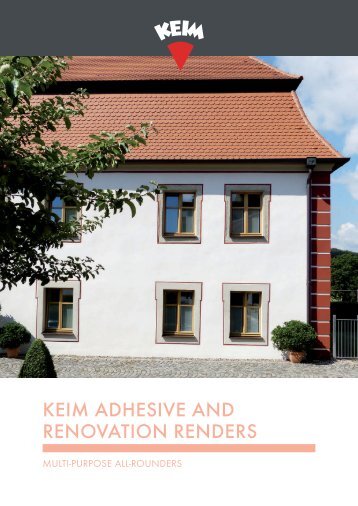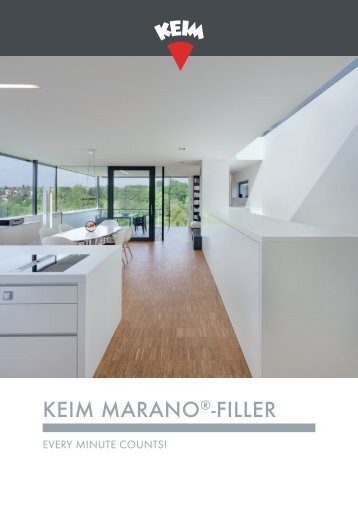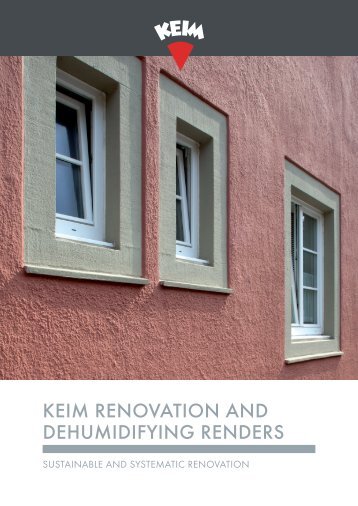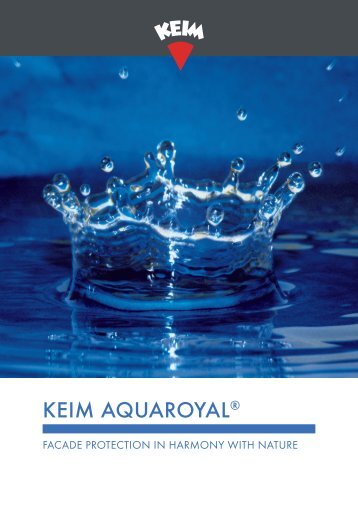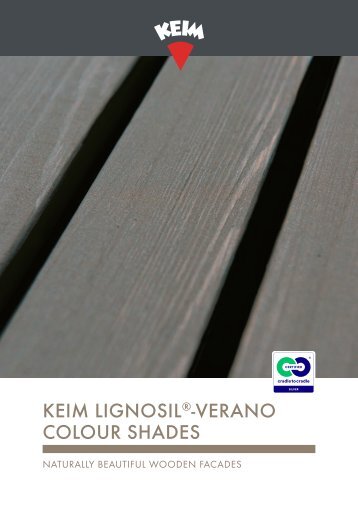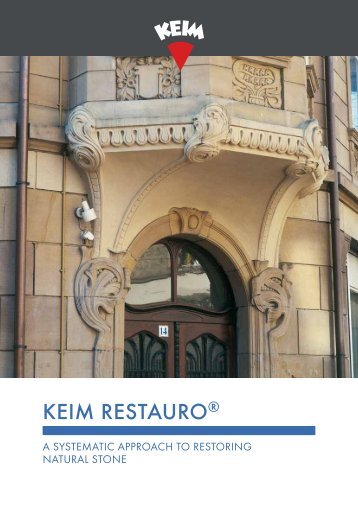platzhalter

KEIM "The shutter effect"
OUTDOOR WEATHERING TESTS
OUTDOOR WEATHERING TESTS OF FIVE EXTERIOR PAINTS RESULTS OF PRACTICAL STUDY After eight years of outdoor weathering in two different climatic zones, no adhesion problems in form of cracks or blisters occurred in any of the exposed samples. In terms of decorative properties, the investigated silicate products all exhibited distinctly less change than the silicone paint and the acrylic paint. This is impressively clear from the instrumentally measured delta E-value and blue value. The silicate product accordingly exhibit the best colour stability. The photo documentation below shows the superiority of high-quality silicate paints manifested in terms of colour stability. In a nutshell: The superiority of high-quality silicate paints over polymer and silicone resin bound exterior paints when it comes to colour stability has been impressively substantiated by comprehensive tests carried out. PROBLEMS OF COLORIMETRY An appropriate colorimeter is used for instrumentally verifying colour shades and colour differences by determining the specific "colour location" of the colour shade within the three-dimensional "colour space". Colour shades are defined by three parameters: firstly on a light-dark axis, secondly on a red-green axis and thirdly on a yellow-blue axis. If all three axes are visualised, a three-dimensional space is created. This colour space comprises an infinite variety of subtly different colour shades. Each possible combination of the three values on the three stated axes represents a point within this colour space and thus a colour shade. Conversely, the exact position within the colour space can be determined for each colour shade as the combination of the three coordinates. This combination unambiguously defines the colour shade. If the colour shade undergoes change, this can be unambiguously demonstrated instrumentally, the change being manifested as a change in one or more of these values on the axes. The sum of these changes is known as the "delta E value" which describes the "total colour difference" as the sum of the three colour differences on the axes. The problem is that the delta E value is perceived differently by the eye depending on how delta E is made up and the particular colour shade in question: delta E is the sum of three individual values. COLOUR CHANGE (LEFT UNWEATHERED, RIGHT AFTER 8 YEARS OF OUTDOOR WEATHERING) KEIM PURKRISTALAT KEIM SOLDALIT KEIM GRANITAL
T H E "SHUTTER EFFECT" – COL O U R ST A B I L I T Y OF F A C A D E CO A T I N G S 15 Accordingly, many different individual values can be added together to give the same result and thus the same delta E value. This is simple arithmetic: 1+2+3 = 6 is just as correct as 3+0+3 = 6, but while the result may be the same, a visual assessment may prove to be entirely different. The explanation for this is that human perception also differs in sensitivity depending on colour shade. In the case of blue or grey shades, our eye is highly sensitive and recognises even very small delta E values as a colour difference. In the case of yellow-orange shades, on the other hand, our eye is fairly insensitive. In this case, small delta E values are not even perceived. In brief: Instrumental delta E-values do not always correlate with what we humans see, especially when it is a question of the extent and intensity of a colour difference. CHANGE IN BLUE VALUE B in % 80 70 60 50 40 30 20 10 0 80 70 60 50 40 30 20 10 0 Purkristalat Soldalit Granital Silicone/Lotus effect Acrylic facade paint 1 YEAR 8 YEARS SILICONE FACADE PAINT/LOTUS EFFECT ACRYLIC FACADE PAINT
- Page 1 and 2: THE „SHUTTER EFFECT“ COLOUR STA
- Page 3: COLOURS IN COLOURFUL Colours change
- Page 6 and 7: MINERAL PIGMENTS: RESISTANT AGAINST
- Page 8 and 9: KEIM’S SILICATE PRINCIPLE: UNEQUA
- Page 10 and 11: KEIM’S SILICATE PAINTS - FOR CLEA
- Page 13: T H E "SHUTTER EFFECT" - COL O U R
- Page 18 and 19: A BRIEF ASIDE ON COLOUR BRIGHTNESS
- Page 20: KEIMFARBEN GMBH Keimstraße 16/ 864
Inappropriate
Loading...
Mail this publication
Loading...
Embed
Loading...
GENERAL INFORMATION
SPECIAL TOPICS AND THINGS TO KNOW
CONSERVATION AND DESIGN
INFORMATION FOR BUILDING OWNERS
EXTERNAL PAINT SYSTEMS
INTERNAL PAINT SYSTEMS
MINERAL STUCCOS AND RENDERS
ETICS
WOOD COATING
CONCRETE REPAIR AND PROTECTION
© 2022 KEIMFARBEN GMBH









